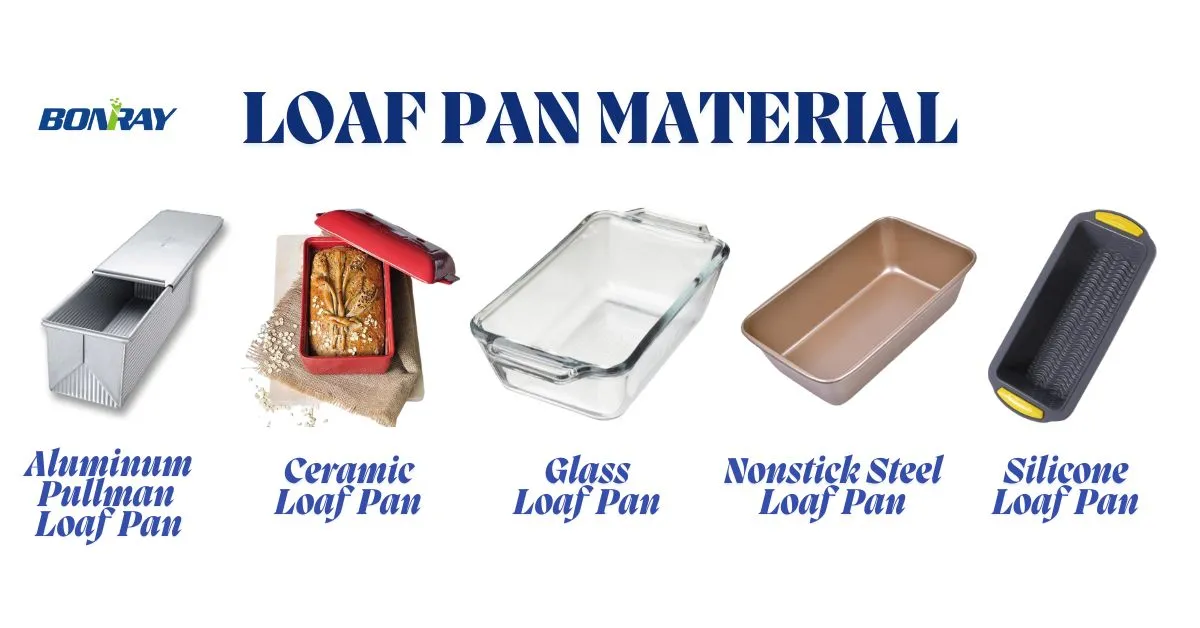How to Choose the Right Material for Bakeware Products Purchasing Decisions: A Complete Guide for Large Purchasers
Have you ever been lost in a material maze while trying to source bakeware products for your business? Have you ever wondered what role material plays in making your bakeware purchasing decisions smarter? Isn’t this a dilemma that haunts huge purchasers across the bakeware industries?
In today’s market, selecting the correct material is critical for making informed purchase selections. And we are here to provide you with a comprehensive guide on how to navigate this critical aspect. This is the key to getting your bakeware products’ quality, durability, and even your brand image right.
Why is Material Selection Crucial for Large Purchasers of bakeware products?
Material selection is significant for bakeware product quality. The material could be responsible for up to 60% of a product’s quality and durability, according to the Harvard Business Review. It has an impact on end-user experience, making it an essential option for serious purchasers like you.
When buying in bulk, even little changes in material quality might lead to large differences in the whole product’s performance. Assume you’re looking for metal bakeware. An inferior metal might deform when heated, ruining the cooking process and leading to dissatisfied customers.
Customizing Bakeware: The Solution of Material
When customizing bakeware, material selection becomes even more important. Because of its flexibility, carbon steel is good for the competitive price, but stainless steel or aluminum may be preferable for sturdy, long-lasting customized items.
When customizing bakeware, material selection becomes even more important. Because of its flexibility, carbon steel is good for competitive price, but stainless steel or aluminum may be preferable for sturdy, long-lasting customized items.
In the dynamic world of product design, ingenuity often comes from the most unusual combinations. One such popular approach involves merging two distinct materials in a single product design. It enables designers to enhance product performance, durability, and aesthetics, thereby enriching the user experience. However, as rewarding as this approach can be, it also brings a host of challenges.
Last year, a chain store customer sought to develop a roasting pan with a new design. The ambitious design featured a carbon steel pan body with aluminum handles—an innovative blend that presented entirely different manufacturing processes and techniques. A tooling fee of up to 30,000 US dollars was involved, demonstrating the significant investment required.

Each material demands specific manufacturing techniques, further complicating the product design process. And one of the critical aspects of this project was ensuring that the roasting pans were protected from scratching during post-processing. In this case, Bonray strategically planned post-processing steps so as to maintain product quality and avoid any potential damage. The final product was a high-quality, scratch-free roasting pan that perfectly embodied the merits of combining two different materials.
How Can You Identify the Right Material?



The first step is to comprehend your product and its specifications. Heat resistance, nonstick qualities, and durability are important considerations for metal bakeware. According to industry studies, materials such as carbon steel, stainless steel, and aluminum are commonly used for their desirable properties.
However, each has its pros and cons. Stainless steel is incredibly durable and resistant to rust but is not the best conductor of heat. Aluminum is lightweight, and conducts heat well, but it can react with acidic foods. Carbon steel with non-stick coating makes food release easy but can scratch easily.
Furthermore, considering the pricing, you’re not just buying a product, but buying it in bulk. The cost implications can be substantial. To figure out a balance between quality and cost, use cost analysis tools and engage in business negotiations.
What Role does the Supplier Play in Material Selection?
A reliable supplier is just as important as the correct material. To match your requests, they should have a strong supply chain and manufacturing capability in metal bakeware industry.
Your supplier should also have the necessary R&D skills and certification credentials. This guarantees that they are able to provide the quality you want and assist you in customizing items to your specifications.
At Bonray, we take pleasure in our professional technical capabilities in bakeware product manufacturing and design, as well as our extensive expertise in developing new bakeware items for our clients as well as providing marketing advice for their bakeware products.
What if Material Quality Issues or Delivery Delays Occur?

Both of these problems might be harmful to your company. According to PwC’s Global Supply Chain Survey, supply chain interruptions can result in a 9% decrease in revenue.
As a result, always choose suppliers that have a proven track record of quality control and on-time delivery. If problems occur, make sure they have solutions to deal with them.
Conclusion
Choosing the proper material for your bakeware goods is a crucial factor in making more informed purchase decisions. You can manage this difficult process more efficiently if you understand your product’s specifications, analyze cost, choose a reliable supplier, and plan for uncertainties. At Bonray, we stand ready to support you in making these smart choices. Because when you succeed, we succeed.








